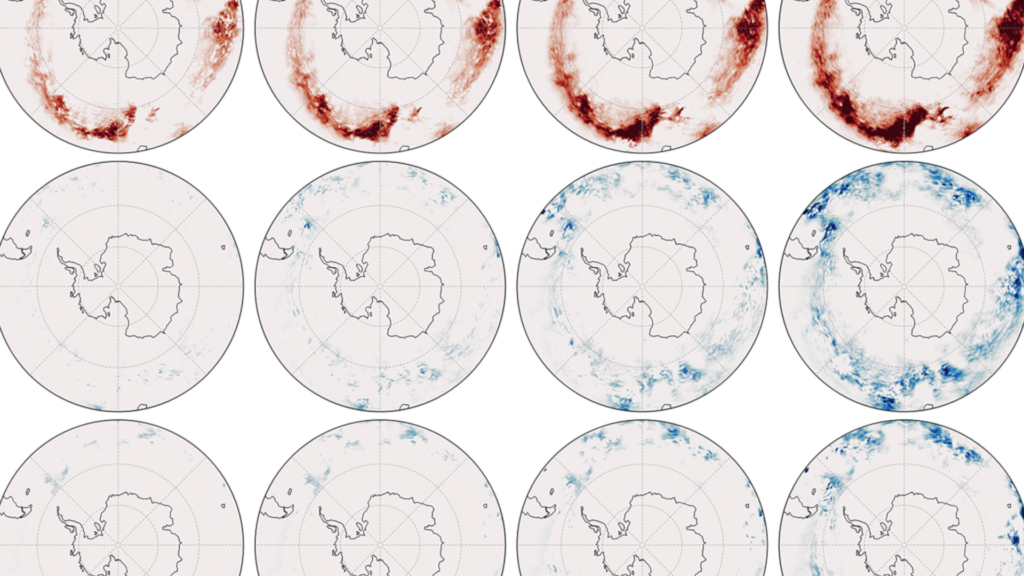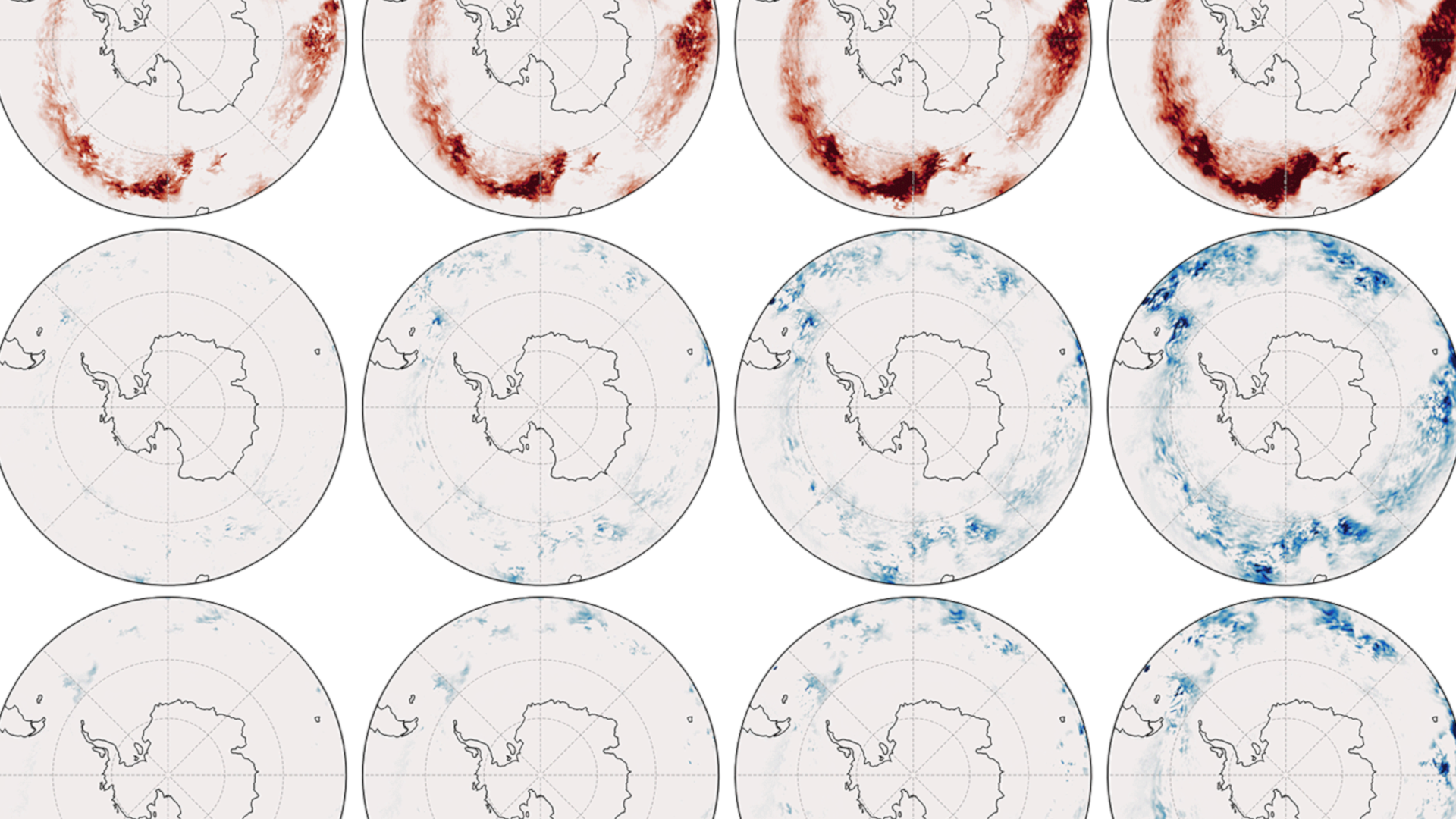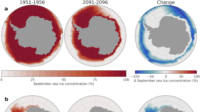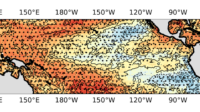
Modeled projections of climate change typically do not include a well-resolved ocean mesoscale due to the high computational cost of running high-resolution models for long time periods. This challenge is addressed using efficiency-maximizing modeling strategies applied to 3 km simulations of the Southern Ocean in past, present, and future climates.
The model setup exploits reduced-resolution spin-up and transient simulations to initialize a regionally refined, high-resolution ocean model during short time periods. The results are compared with satellite altimetry data and more traditional eddy-present simulations and evaluated based on their ability to reproduce observed mesoscale activity and to reveal a response to climate change distinct from natural variability.
The high-resolution simulations reproduce the observed magnitude of Southern Ocean eddy kinetic energy (EKE) well, but differences remain in local magnitudes and the distribution of EKE. The coarser, eddy-permitting ensemble simulates a similar pattern of EKE but underrepresents observed levels by 55 %. At approximately 1ºC of warming, the high-resolution simulations produce no change in overall EKE, in contrast to full ensemble agreement regarding EKE rise within the eddy-permitting simulations. At approximately 4ºC of warming, both datasets produce consistent levels of EKE rise in relative terms, although not absolute magnitudes, as well as an increase in EKE variability.
Simulated EKE rise is concentrated where flow interacts with bathymetric features in regions already known to be eddy-rich. Regional EKE change in the high-resolution simulations is consistent with changes seen in at least four of five eddy-permitting ensemble members at 1ºC of warming and all ensemble members at 4ºC.
However, substantial noise would make these changes difficult to distinguish from natural variability without an ensemble.




